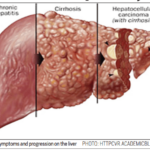WHO Launches First-Ever Global Guidelines on Meningitis Diagnosis, Treatment and Care
In a major step toward eradicating one of the world’s deadliest infectious diseases, the World Health Organization (WHO) has launched its first-ever global guidelines for the diagnosis, treatment, and care of meningitis. This groundbreaking move is aimed at saving lives, preventing long-term complications, and ensuring quality care for patients — especially in countries where health systems are under strain.
At Daily4mative, we break down what this means, why it matters, and how it could change the future of meningitis care around the world.
Why These Guidelines Matter
Meningitis — an inflammation of the membranes that surround the brain and spinal cord — is a life-threatening illness. It can be caused by bacteria, viruses, fungi, or parasites, but bacterial meningitis is the most dangerous form. It can kill within 24 hours and often leaves survivors with serious long-term health issues, such as hearing loss, brain damage, or limb amputation.
According to WHO data:
-
In 2019 alone, there were an estimated 2.5 million cases of meningitis globally.
-
1.6 million cases were due to bacterial meningitis.
-
Approximately 240,000 people died from bacterial meningitis in that year.
-
Around 20% of survivors suffer from permanent complications.
These statistics highlight the urgent need for standard, globally accepted guidelines — and that’s exactly what WHO has delivered.
What’s in the New WHO Guidelines?
The guidelines provide evidence-based, practical steps for health professionals. They focus on three main pillars:
-
Early Diagnosis
Quick recognition of symptoms such as high fever, headache, stiff neck, vomiting, confusion, and sensitivity to light is essential. The guidelines aim to equip healthcare workers with tools to identify and respond fast, especially in remote or resource-limited settings. -
Prompt and Effective Treatment
The guidelines recommend the best antibiotic regimens for various types of bacterial meningitis and stress the importance of administering treatment within the critical first few hours of symptom onset. -
Long-Term Care and Follow-Up
Many survivors are left with physical or neurological disabilities. WHO emphasizes the importance of rehabilitation services, including hearing assessments, physical therapy, and psychological support.
Aiming for 2030: The Global Goal
These guidelines are part of WHO’s larger strategy titled “Defeating Meningitis by 2030”, which sets ambitious global targets:
-
Eliminate bacterial meningitis epidemics
-
Reduce vaccine-preventable cases by 50%
-
Cut related deaths by 70%
-
Improve quality of life for survivors
This roadmap focuses on prevention, surveillance, diagnosis, care, and advocacy, making meningitis not just a health issue but a public health priority.
What This Means for Low- and Middle-Income Countries
While meningitis can affect anyone, anywhere, low- and middle-income countries (especially in Africa’s “meningitis belt”) bear the highest burden. WHO’s guidelines are designed to be accessible and implementable in these settings, where diagnostic tools and medications are often limited.
By providing clear clinical protocols, the WHO hopes to help countries develop national strategies, improve vaccination programs, and invest in care infrastructures that can respond swiftly to outbreaks.
Final Thoughts from Dr. Tedros
WHO Director-General Dr. Tedros Adhanom Ghebreyesus stated:
“Implementing these guidelines will help save lives, improve long-term care for those affected by meningitis, and strengthen health systems — particularly where resources are limited.”
Stay Informed, Stay Protected
At Daily4mative, we are committed to keeping you informed on the latest health breakthroughs that affect you and your loved ones. Meningitis is a fast-moving, deadly disease — but with the right tools, policies, and public awareness, we can defeat it.
Have questions or personal experiences related to meningitis? Drop them in the comments below or email our health team at health@daily4mative.com.
Sources:












